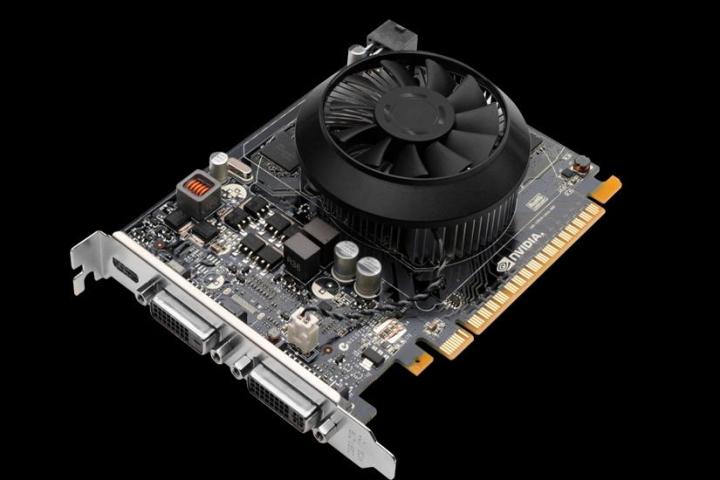
If you’re a PC enthusiast with a bottomless bank account, then yesterday’s Titan Z release probably had you salivating. However, if your PC component budget is more aptly described with words like “modest” and “tight,” then the company’s other new graphics card launch may be more up your alley.
Nvidia is following up the release of its Titan Z behemoth with the GeForce GT 740, a value-oriented graphics card that’s priced at roughly $100, depending on which revised version of the card you grab. Though previous budget releases this year employ the company’s new Maxwell architecture, like the Nvidia 750 Ti, the GT 740 is stuffed with an older Kepler GK107 GPU.
As for base specs, the Nvidia GT 740 sports 384 CUDA cores, a base clock of 993 MHz, and has a TDP of 64 watts. Ports include DVI-I, DVI-D, and mini HDMI. These cards will generally ship with either 1GB or 2GB of RAM. As you might expect though, some of these specs will get tweaked by companies who take the card, and make their own changes.
Right now on Amazon, you can find multiple variants of the GT 740 from firms like EVGA and Gigabyte. Prices range from $95 to $105.
Editors' Recommendations
- Nvidia at CES 2023: RTX 4090 mobile, 4070 Ti, GeForce Now updates
- Nvidia’s new GeForce Now plan delivers 1440p 120Hz game streaming to any device
- Nvidia to bring GeForce RTX graphics to ARM-based Chromebooks and Linux PCs
- Nvidia’s GeForce RTX 3080 GPU promises 100 FPS gaming at 4K resolution
- Nvidia GeForce Now cloud gaming is $5 a month with ray tracing and 1,000+ games



